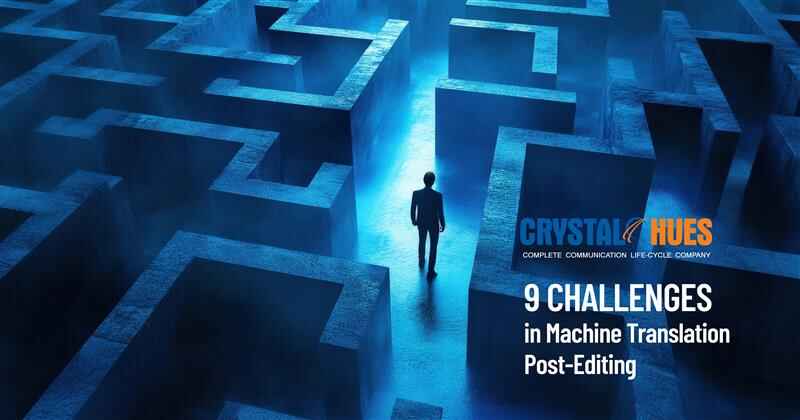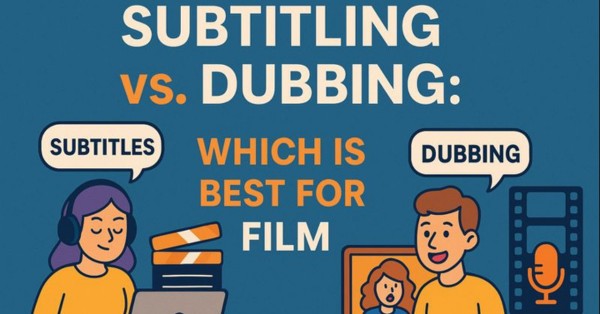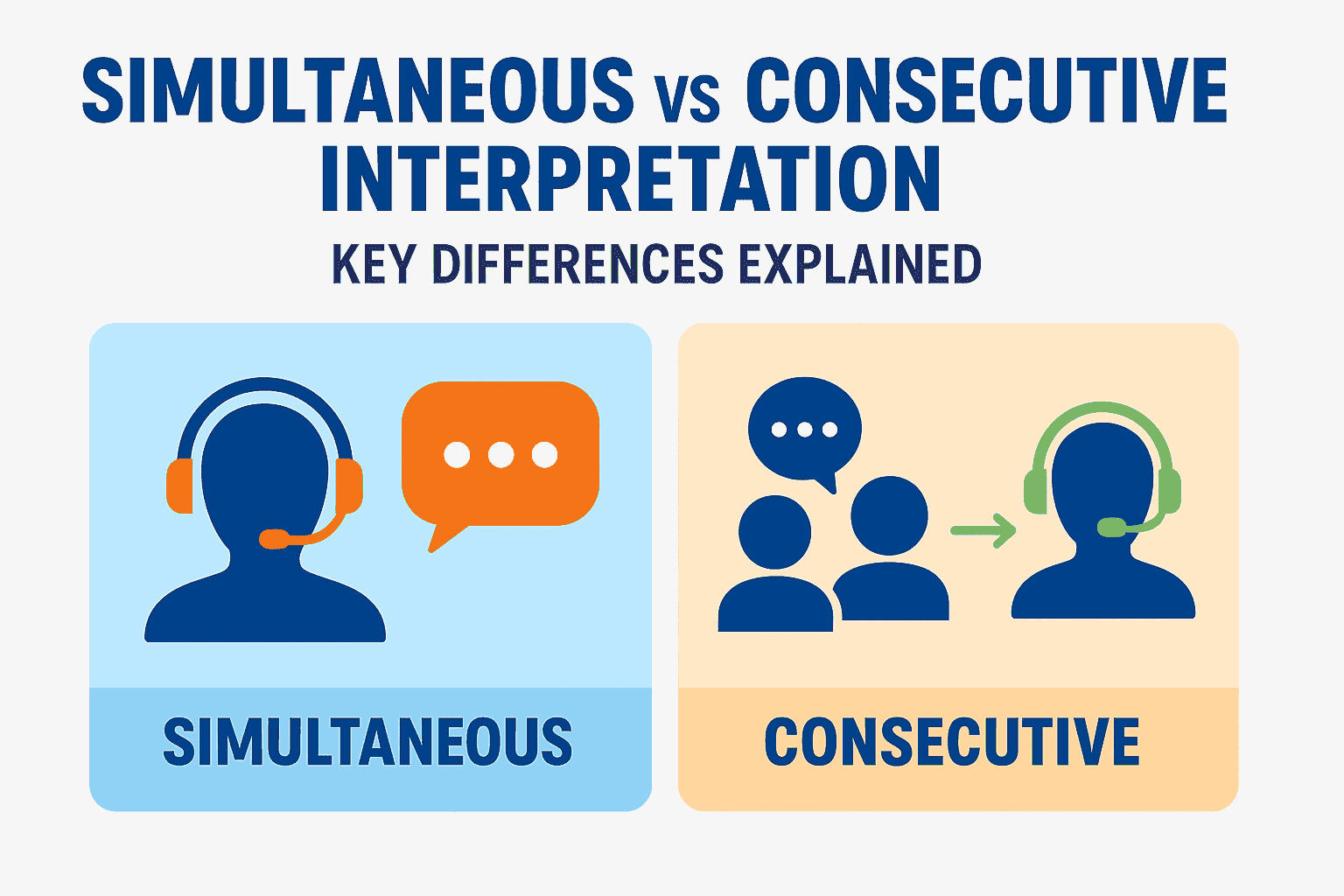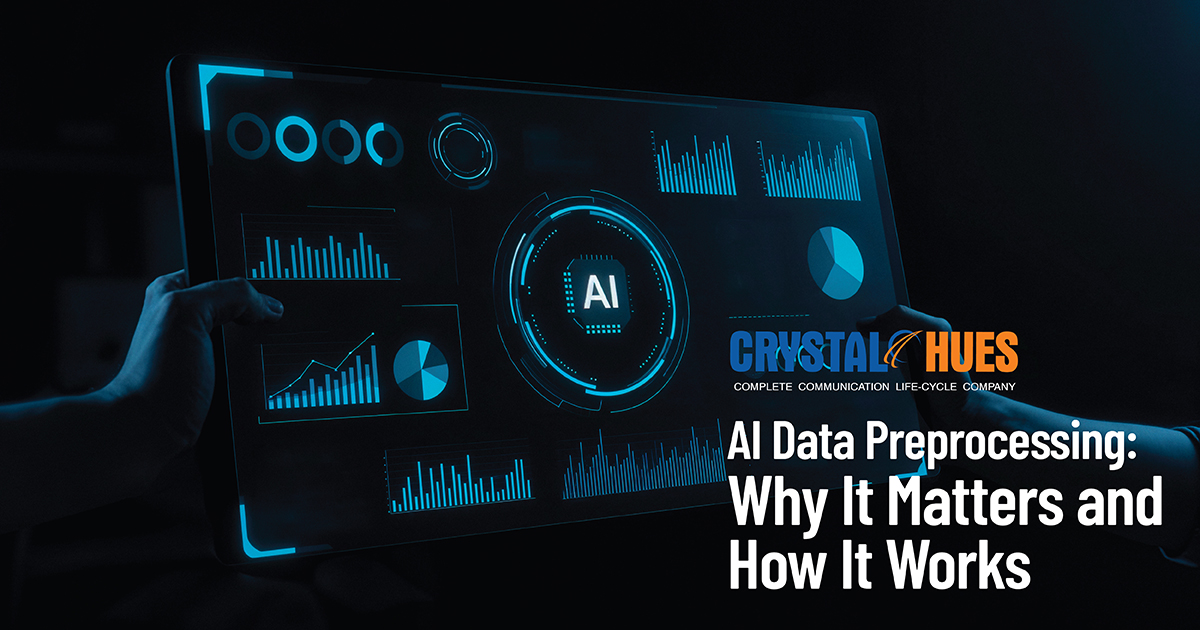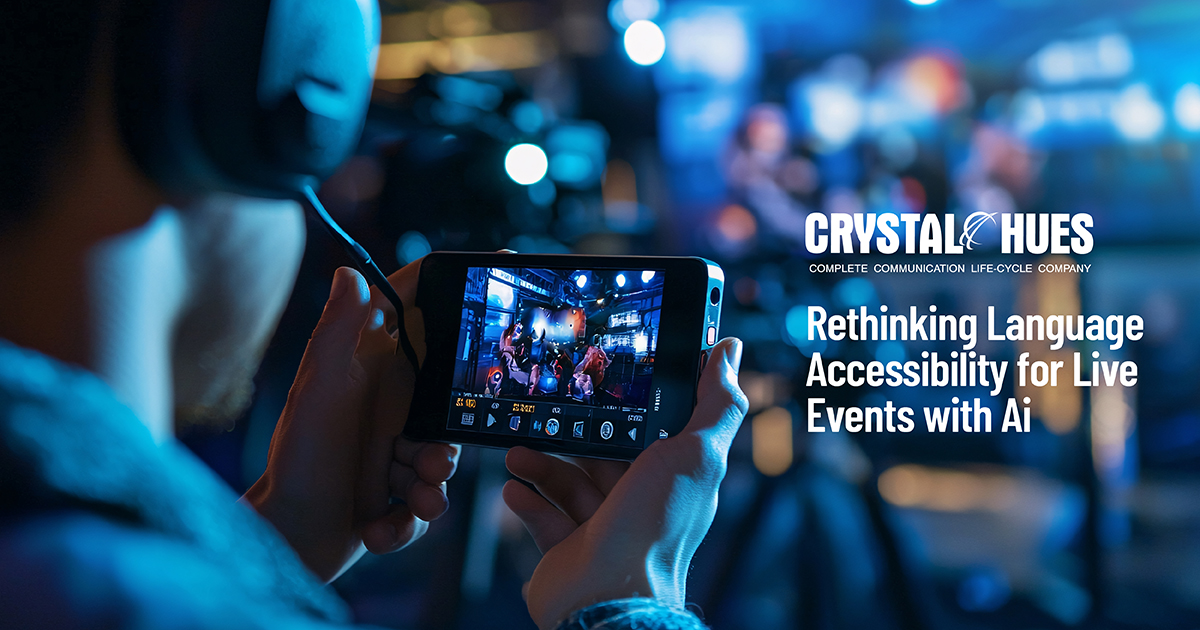
Rethinking Language Accessibility for Live Events with AI
The live event landscape—conferences, music festivals, product launches, political events, etc.—is changing in an increasingly global and hybrid-first world. What was once a unilateral language affair must now contend with many more demands, and on a wider range of audience needs.
From guests with hearing loss, to guests whose first language is not English, to guests who are neurodivergent and/or have inherited learning disabilities, today's live event stage is fundamentally different with accessibility rightly gaining more importance.
But what is driving
this change? Language—and a more sophisticated understanding of how AI-assisted
localization can break down long-standing barriers to inclusion.
A New Definition
of Accessibility
Accessibility is not restricted to a ramp, a sign language interpreter, or a large brochure. In the context of live events, it means:
- Linguistically inclusive: Meaning is made available in multiple languages
in a timely fashion.
- Cognitively accessible: Information is understandable by neurodivergent
or learning-disabled guests.
- Sensory inclusive: Events are much more inclusive to guests who are
blind, deaf, or hard of hearing.
Physical barriers have long been debated, but physical barriers, compared to language, have remained the most underestimated barrier to accessibility.
The Role of Language as a Foundation of Inclusion in Live Events
Picture taking part in a safety seminar presented in a language you do not completely understand or attending some high-stakes conference with a keynote presentation that is made in fast, jargon-infused English. Now, picture that across all cultural and linguistic groups. That is the gap localization can close.
Live localization is most effective in:
- Eradicating language-based exclusion.
- Allowing for instantaneous engagement with global
stakeholders.
- Providing better perceived value and reach of an
event.
However, traditional
solutions (i.e. manual interpretation booths, printed multi-language programs,
or hiring hundreds of professional translators) often create high logistical
burdens and costs for events.
This is where AI-driven
language solutions can come in.
AI - Real-Time, Scalable, Human-Observed
Recent developments in Natural Language Processing (NLP), live transcription, AI-based interpretation, and voice clone technologies are changing the live events space when it comes to language access. Below are just a few ways AI is helping with the inclusiveness and practicality of events:
1. Live AI
Interpretation
Live AI interpreters—powered by simultaneous translation engines—are now able to create audio streams, in multiple languages at once, during live events.
These solutions can either be streamed via mobile apps or broadcast to many other audio channels in other languages. These solutions are:
- Faster than human interpretation for mainstream
content.
- Scalable. 10+ languages simultaneously.
- Continuous feedback loops = improved outputs through machine learning.
And yes, through proper
training, domain-specific lexicon (medical, legal, technical) is no longer an
issue.
2. Live Captioning
with Multilingual Subtitles
Have you ever watched a YouTube video of a live event recording and struggled to understand some words due to clarity? And have you noticed when you look at the captions, it still doesn’t add up? Or have you watched a video where you could hear clearly but the subtitles were completely messed up?
AI-generated real-time captions (not captions for video) are not only essential for the deaf but also equally useful for global participants.
Platforms like YouTube Live, Zoom, and Microsoft Teams now include auto-captioning.
However, localization companies offer custom AI captioning engines that include:
- Accuracy, compared for accents/ dialects.
- Translation accuracy on industry lexicons.
- Dynamic multilingual translation into subtitle languages along the way.
3. Multilingual
Chat & Q&A Tool
If you’re attending virtual or hybrid events, AI can enable multilingual engagement tools that allow you to ask questions or chat in the language of your preference.
AI can instantly
translate your question into the speaker's language and then translate the
answer back into the attendee's language, creating a true two-way conversation
or exchange.
4. Voice Cloning
for Naturalized Experience
Advanced AI models are developing sufficiently to clone the voice of a speaker in real time and, thereafter, can produce translations in the same inflection and emotion—treating multilingual experiences more like a human being and less like a robot.
This is a game-changer
for the naturalized experience, causing a substantial improvement to immersion
and experience flows for entertainment purposes, product demos, and especially
high-engagement experiences.
Practical Implementation: What Event Organizers Need to Know
While the technology is
powerful, successful implementation demands planning and consideration.
Here are some tangible steps and considerations:
✅ Before
the Event
- You can best identify your target languages
through audience insight, demographics, and registration data.
- Choose your AI stack wisely. Not all AI tools are
created equal.
- In addition to the budget, think about vendor
experience with event localization that can fine-tune engines for context
and accuracy.
- Rehearse: The AI engines benefit from
context. When you feed the engines, context relating to event
terminology, accents of speakers, and run-throughs makes a significant
improvement to the final output.
✅ Hybrid
and On-Ground Set Up
- Select event apps that support multilingual audio
streams and captions.
- Use QR codes or NFC-enabled badges that trigger
content in the attendee’s preferred language when scanned with their
device.
- Finally, do not overlook your network – AI interpretation requires significant low latency internet infrastructure.
✅ Human-in-the-Loop
Quality Control
AI is amazing, but an essential component of any process is a human being providing oversight. Consider an event where accuracy matters. Human language professionals monitoring AI interpretation would be a sounding board.
The Business Case
for Inclusive, Multilingual Events
Let’s be pragmatic - there is both a moral and a strategic imperative for deciding to embrace multilingual accessibility.
- Global impact: AI interpretation can allow your regional event
to have an international impact.
- Deeper learning: Attendees who engage in content in their
language absorb and learn more and engage more.
- Brand goodwill: Being perceived as inclusive may exponentially
increase trust and goodwill.
- Compliance: Many parts of the world are adopting laws that make accessibility mandatory. Being future compliance-ready is smart for business.
According to Common
Sense Advisory, 72.4% of consumers are more likely to engage with content in
their language.
Extrapolate that to attendees, sponsors, and speakers—and the ROI is hard to ignore.
What is the Next
Step?
AI won’t just translate the content. It will spur access for everyone.
From AI captioning to machine interpreting and multilingual chatbots, we are on the cusp of a major shift in the live events experience. The winners will be those who see accessibility as a design principle and a necessity, not as an afterthought, and are led by language.
And that brings us to our concluding thoughts.
Accessibility is not a checklist; it is a commitment to belonging. And in live events, it begins with reframing the conversation around language inclusion.
By actively utilizing AI solutions, we can open events to more people, in more places, with more dignity. That's more than innovation; that's progress.
